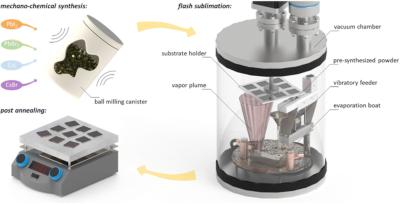Researchers create all-inorganic perovskite nanocrystalline glass doped with rare-earth ions
Researchers from China's Kunming University of Science and Technology and Southwest United Graduate School have doped rare-earth ions into borosilicate glass for the first time to induce the self-crystallization of CsPbBr3 QDs.
All-inorganic perovskite quantum dots (QDs) in glass materials, specifically CsPbX3 (X = Cl, Br, I), have potential as next-generation fluorescent materials due to their impressive luminous performance and stability. However, the crystallization process of quantum dots within the glass presents a challenge, leading to uneven crystallinity and subsequent reductions in light efficiency, thereby affecting practical applications. In glass ceramics doped with rare-earth oxides, the introduction of rare-earth ions as nucleating agents can promote the self-precipitation of nanocrystalline crystals within the glass.


